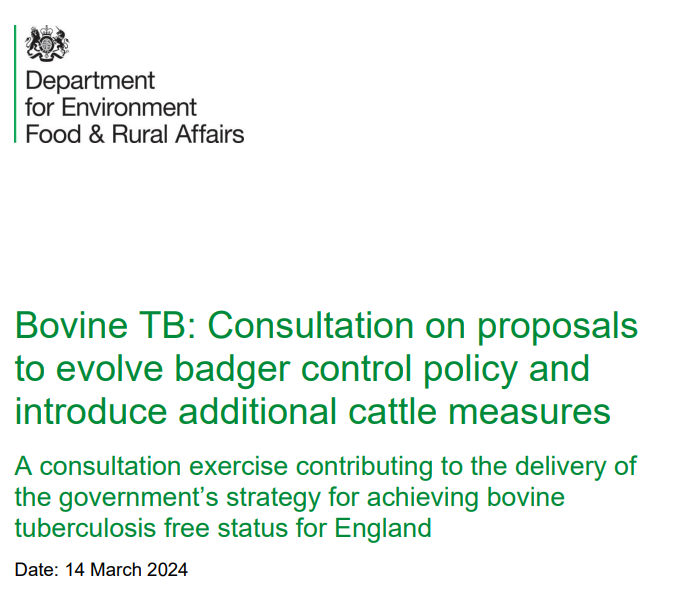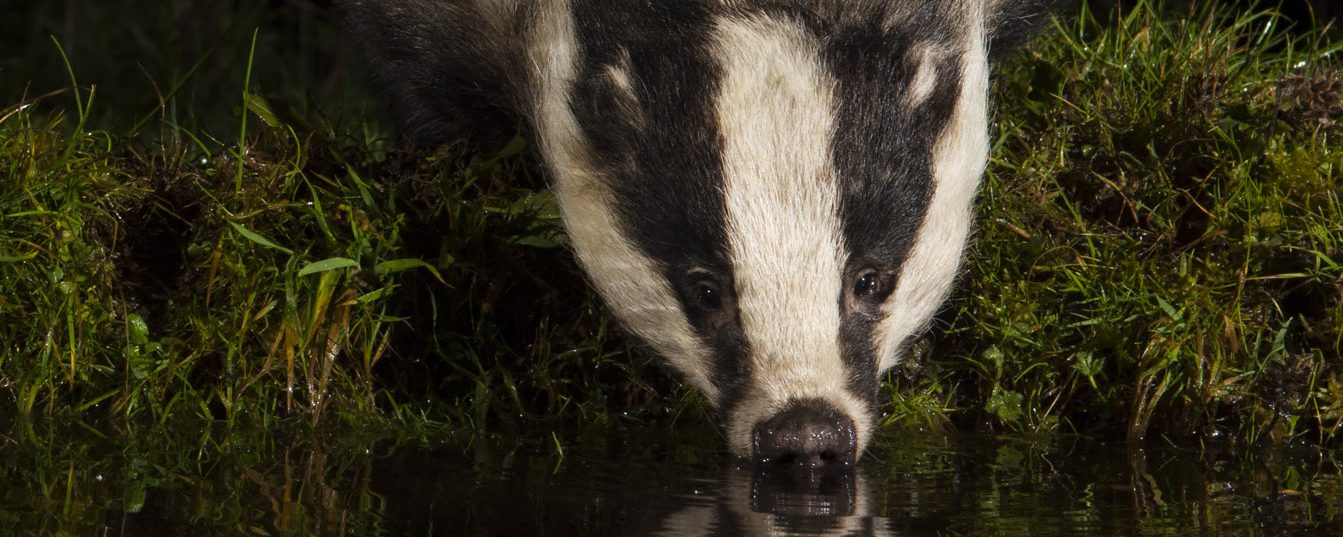
Defra have today announced a 5-week consultation on chilling plans to kill 100% of badgers (also known as epi-culling) in bovine TB affected areas. Rowing back on the pledge for its use only in rare exceptions, this is effectively an increase on the cull limits imposed since culling started in 2013. It is set to be implemented this year in both previously culled and new areas, although not in areas culled in 2024 and 2025 because most of the badgers are already dead there.
The new culling method is based on a ‘model’ trial in Cumbria where over 1100 badgers were shot dead between 2018 and 2022, but where a published report states no demonstrable benefit was achieved in terms of reduced TB breakdowns in cattle herds.
The new policy is partly concealed by a move to encourage the vaccination of recovering badger numbers after culling (for which farm take up is likely to be resisted). The new prolonged killing spree, under what looks like a highly simplified license system, could see the badger tally rise from around 250,000 shot to-date, towards 300,00 by 2030 and half a million by 2038. This would be a cull of largely healthy adult badgers and their cubs, cruelly slaughtered using crude methods opposed by the British Veterinary Association, and for no good reason.
This is a government U-turn on the current policy implemented in 2020 under Boris Johnson. Johnson indicated any future culling of badgers would be in ‘exceptional’ circumstances only. But the new draft policy has already established ‘cluster groups’ across many central English ‘Edge’ counties where ‘free-for-all’ culls may be allowed locally starting this autumn. Culling will return to previous ‘intensive’ cull areas, where it has currently failed to have an effect.
It is not clear how quickly the new approach will be rolled out or whether a new incoming government would stop it. The Labour party has previously pledged to bring an end to badger culling. Will this change following the NFU’s hope and plea at its conference that the issue will not become an election ‘wedge issue’?
The government claim that badger culling has enabled a drop of 56% since 2013 is repeated in the new consultation, but is based upon a misreading of the recently published Birch et al, who acknowledge that the overall result cannot be attributed either to badger culling or cattle measures; the different measures were analysed together and it is as likely to be cattle measures as badger culling. They then headline that the effect was caused by badger culling alone, something that top Oxford academic David Macdonald has stated in a January 2024 Badger Trust report is absolutely not the case. So why have they lied?
The APHA have stated more than once, that breakdown data by themselves cannot be used to evaluate the effect of badger culling. Christine Middlemiss on Farming Today in 2022 said that it was ‘very difficult’ to compare culled and unculled area so as to isolate the effect of badger culling on bovine TB. Birch et al (2024) do not claim to have done this and they have not, but their scientific paper has confused wording and this has badly mislead the Defra Minister Douglas-Miller. The only peer-reviewed analysis since 2017 that compared culled and unculled areas found no difference in cattle disease between the two (Langton et al.).
It would seem that DEFRA are unable to interpret the science their own staff have published. They are also refusing to hand over the code that they used to analyse the data.
So what does this all mean? It means the end of the Protection of Badgers Act. There are no restrictions on the number of cull areas and no one will know where they are. Slack controls and confusion will confuse enforcement bodies and the public. This proposed policy is a disaster and must be stopped.
Discover more from The Badger Crowd - standing up for badgers
Subscribe to get the latest posts sent to your email.

